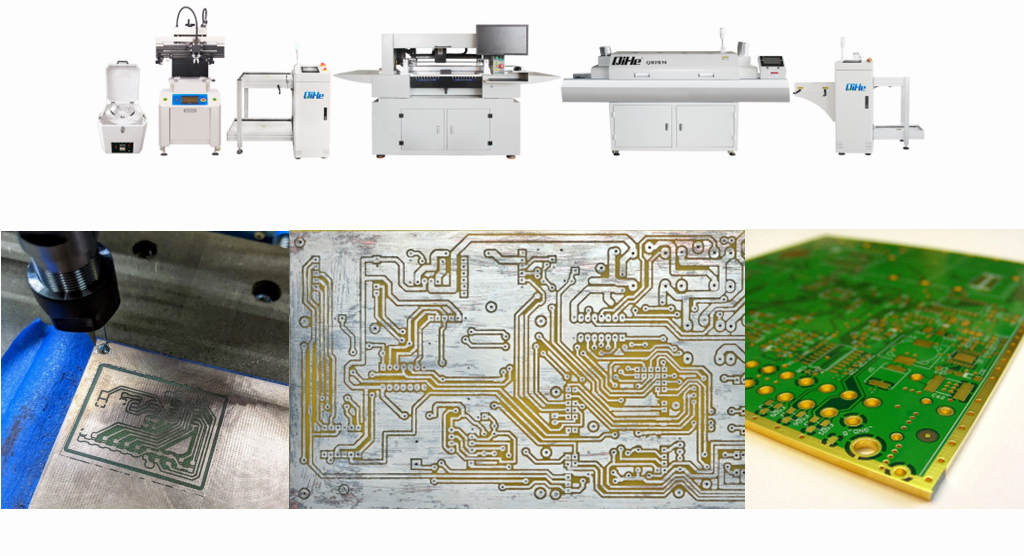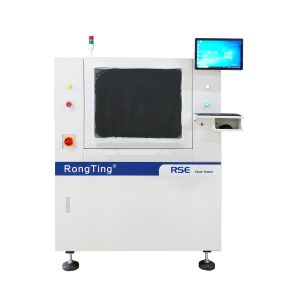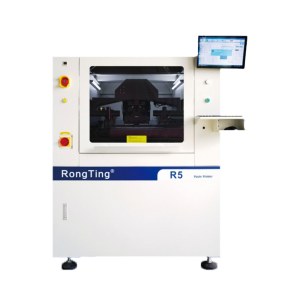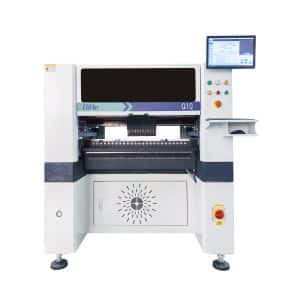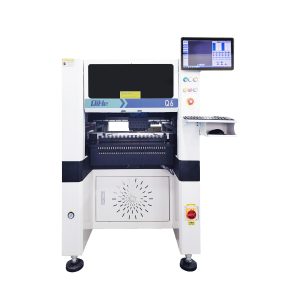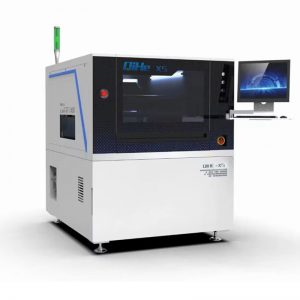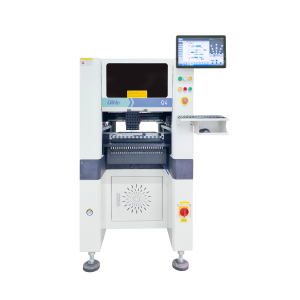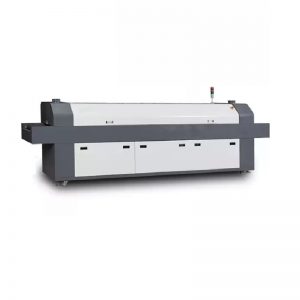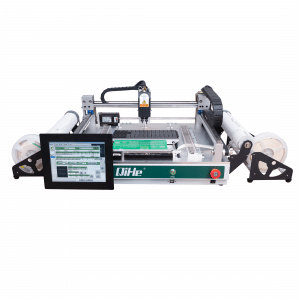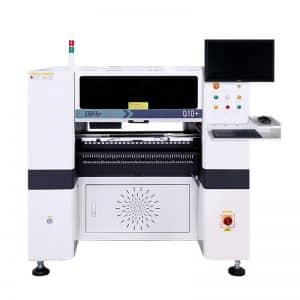Today author from QiHe smt pick and place machine price sharing you with Summaries of special electroplating methods for SMT PCB
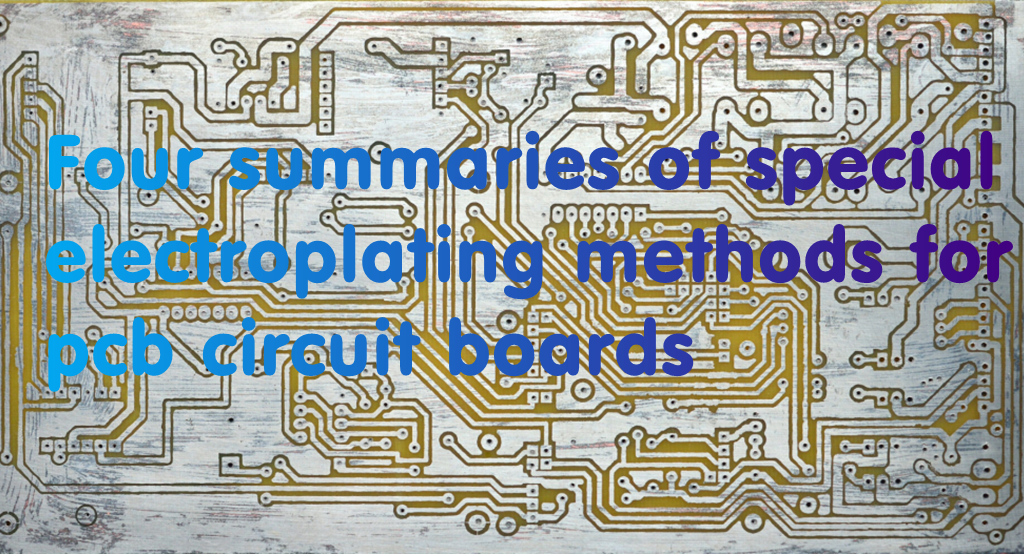
It is often necessary to plate rare metals on board edge connectors,
The protruding contacts or gold fingers on the edge of the board provide lower touch resistance and higher wear resistance,
This technique is called finger row plating or prominent part plating.
Gold is often plated on the outstanding contacts of board edge connectors whose inner plating is nickel.
The protruding part of the gold finger or the edge of the board adopts manual or automatic electroplating technology,
At present, the gold plating on the touch plug or gold finger has been replaced by basking, lead plating, and button plating.
Its process is as follows:
1) Strip coating to remove tin or tin-lead coating on prominent contacts
2) Rinse with washing water
3) Wipe with abrasives
4) Activated by immersion in 10% sulfuric acid
5) The thickness of nickel plating on the outstanding contacts is 4 -5μm
6) Rinse with demineralized water
7) Gold impregnation solution treatment
8) Gold plating
9) Cleaning
10) drying
The second type: through-hole plating
There are many ways to establish a layer of electroplating that meets the requirements on the wall of the substrate drilled hole.
This is called pore wall activation in industrial use,
Its printed circuit commercial production process requires multiple central storage tanks,
Each storage tank has its own control and maintenance requirements.
Through-hole plating is a necessary follow-up manufacturing process of the drilling manufacturing process,
As the drill drills through the copper foil and the underlying substrate,
The heat generated melts the insulating synthetic resin that makes up the matrix of most substrates,
Molten resin and other drilling debris build up around the hole,
Coated on newly exposed hole walls in copper foil,
In fact this is detrimental to the subsequent plating surface.
The molten resin will also leave a layer of thermal axis on the wall of the substrate hole,
It exhibits poor adhesion to most activators
This required the development of a class of techniques similar to stain removal and etch back chemistry.
A method more suitable for prototyping of printed circuit boards is to use a specially designed low viscosity ink,
Used to form a highly adhesive, highly conductive coating on the inner wall of each through hole.
This eliminates the need for multiple chemical treatments,
Only one application process, followed by heat curing,
It is possible to form a continuous coating on the inside of all the hole walls,
It can be directly plated without further processing.
This ink is a resin based substance,
It has very strong adhesiveness,
Bonds effortlessly to most thermally polished hole walls,
This eliminates the process of etch back.
The third type: scroll wheel linkage type selection plating
Pins and pins of electronic components,
Such as connectors, integrated circuits, transistors and flexible printed circuits, etc.
All use selective plating to obtain good contact resistance and corrosion resistance.
This electroplating method can adopt manual method,
QHSMT suggest active methods can also be used,
It is very expensive to select and plate each pin individually.
Therefore, it is necessary to use batch welding.
Generally, both ends of the metal foil rolled to the desired thickness are punched,
cleaning by chemical or mechanical means,
Then there are selective options like nickel, gold, silver, rhodium, button
Or tin-nickel alloy, copper-nickel alloy, nickel-lead alloy, etc. for continuous electroplating.
When choosing the plating method,
First, a layer of resist film is covered on the part of the metal copper foil board that does not require electroplating.
Electroplating is performed only on selected portions of the copper foil.
The fourth type: brush plating
Another method of selective plating is called “brush plating”.
It is an electrodeposition technology,
Not all parts are submerged in the electrolyte during the electroplating process.
In this electroplating technique,
Plating only a limited area,
It has no effect on other parts.
Generally, rare metals are plated on selected parts of the printed circuit board,
For example areas like board edge connectors etc.
Brush plating is used more often in electronic assembly shops to repair discarded circuit boards.
Wrap a special anode (a chemically inert anode such as graphite) in an absorbent material (cotton swab)
Use it to bring the electroplating solution to the place where electroplating is required.
QHSMT is an enterprise specializing in the production of SMT equipment, like pick and place machine ,reflow oven,stencil printer ,smt pick and place machine,pnp,pick&place,pcb assembly,smd chip shooter,pnp machine,chip mounter,smt line,welcome to send inquiry
you can choose a reflow oven to meets your need like qfr630,qrf835,qrf1235
stencil printer model qh3040,qp3250,qfa5060
Also we have different kinds of smt pick and place machine like tvm802a,tvm802b,tvm802ax,tvm802bx,tvm925s,tvm926s,ql41,qm61,qm62,qm81,qm10
pick and place machine price
-
Automatic Screen Printing Machine RSE High Efficiency high Power Printing PCB
-
R5 Automatic Screen Printing Machine 2024 new listing SMD Solder Paste Printing
-
Q10 SMT Automatic pick and place machine 10 Heads 100 Slots High Precision and High Efficiency SMT/LED Assembly
-
Q6 SMT pick and place machine 6heads 50slots With PCB Rail Servo Pick&Place Machine
-
QP5060 automatic solder paste printer stencil printer machine screen printer machine
-
Q4 SMT pick and place machine 4heads 50slots With PCB Rail Servo Pick&Place Machine
-
RF8835LS up8/down8 Zones Reflow Oven solder welding
-
TVM802B Plus SMT pick and place machine 2heads 58slots desktop pick&place deluxe edition
-
QM10 SMT pick and place machine 10heads 80slots Fully Automatic Chip mounter SMT Assembly
FAQ about QiHe smt pick and place machine
WHAT IS SMT pick and place machine?
SMT (Surface Mounted Technology) is a comprehensive system engineering technology, which covers substrates, design, equipment, components, assembly processes, production accessories and management. When it comes to SMT pick and place machines, the automatic SMT production line requires automatic loading and unloading machine, automatic solder paste printing machine, placement machine, reflow soldering machine, AOI inspection equipment, connecting table, etc. For these SMT assembly line equipment, Qihe SMT can offer you machines in prototype SMT line, small SMT production line, mass production SMT line at low SMT line cost. Contact us now if you are interested.
WHAT IS SMT ASSEMBLY LINE?
With the development of technology, future electronic products will be lighter, smaller and thinner. Traditional assembly technology can no longer meet the requirements of high-precision and high-density assembly. A new type of PCB assembly technology-SMT (Surface Mount Technology) has emerged. SMT Assembly is the use of automated machines to assemble electronic components on the surface of the circuit board. Its density, high speed, standardization and other characteristics occupies an absolute advantage in the field of circuit assembly technology. In addition, SMT assembly has a wide range of uses.
WHAT IS SMT PROCESS?
There are mainly three steps in SMT assembly line process flow: solder paste printing, components placement and reflow soldering.
- Solder Paste Printing
Its function in SMT line process is to print the solder-free paste on the pads of the PCB to prepare for the soldering of the components. The equipment used is a screen printing machine, located at the forefront of the SMT production line. - Components Placement
Its function is to accurately install the surface mount components on the fixed position of the PCB. The equipment used is a placement machine, located behind the screen printing machine in the SMT production line. - Reflow Soldering
Its function in SMT manufacturing line is to melt the solder paste so that the surface mount components and the PCB board are firmly bonded together. The equipment used is a reflow oven, located behind the placement machine in the fully automatic SMT production line.
